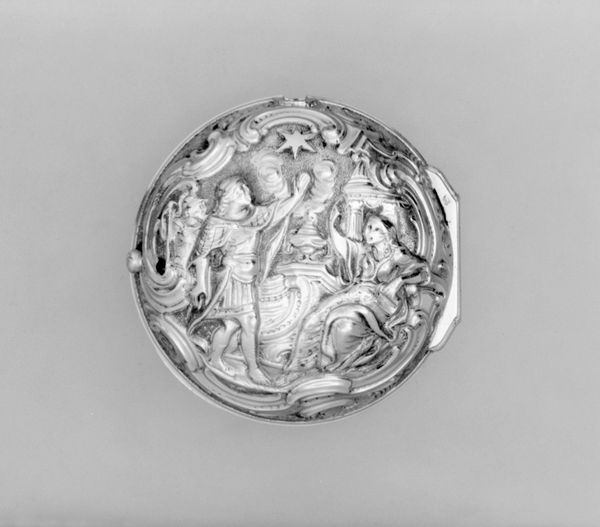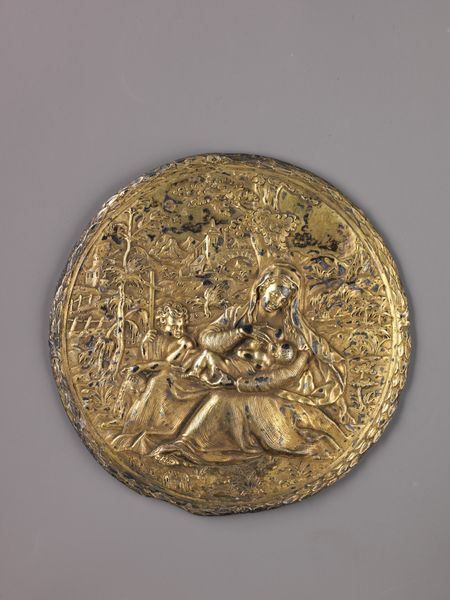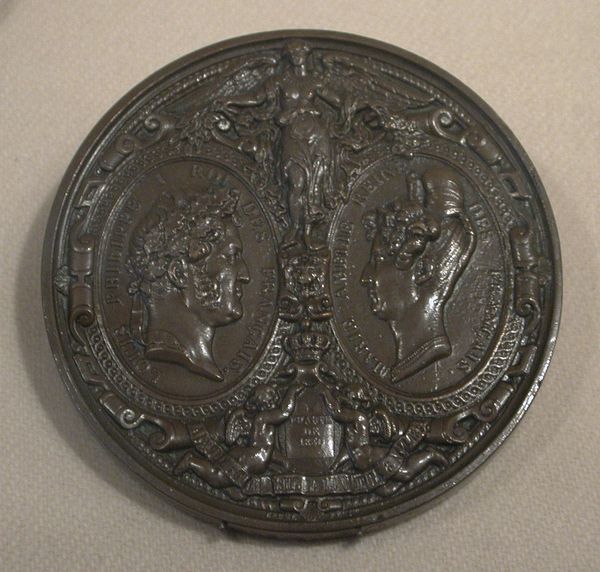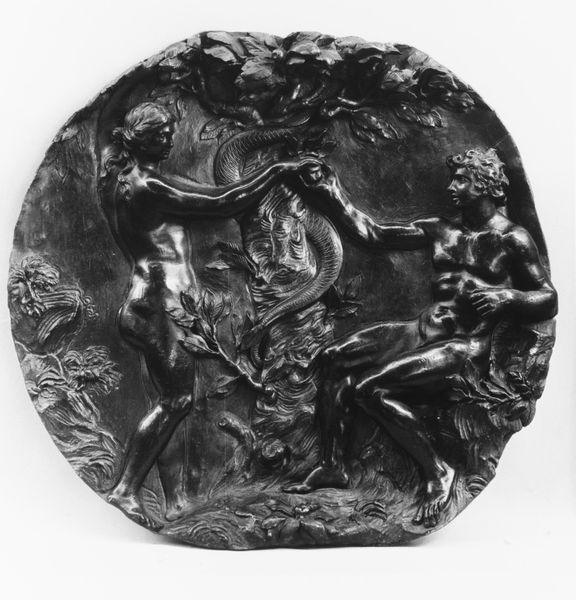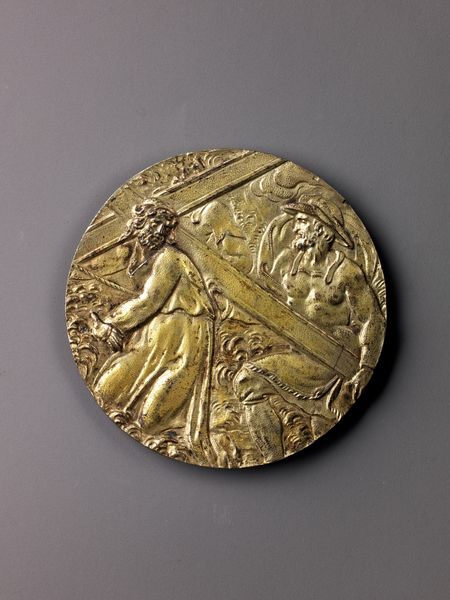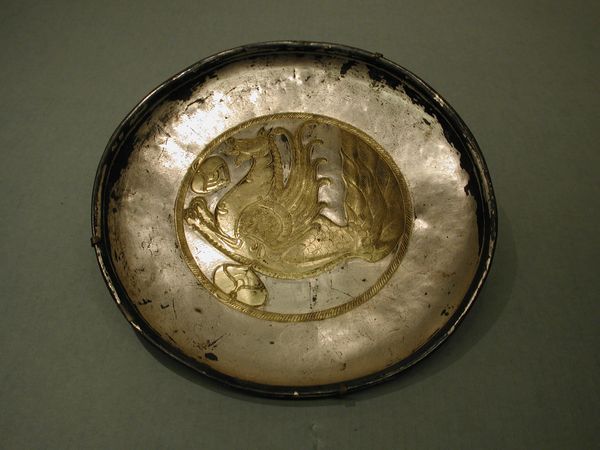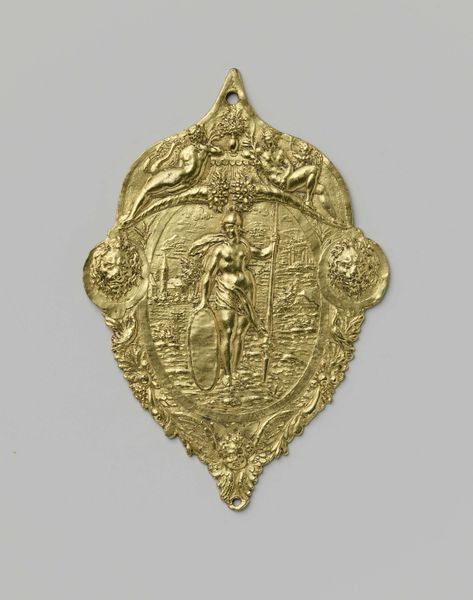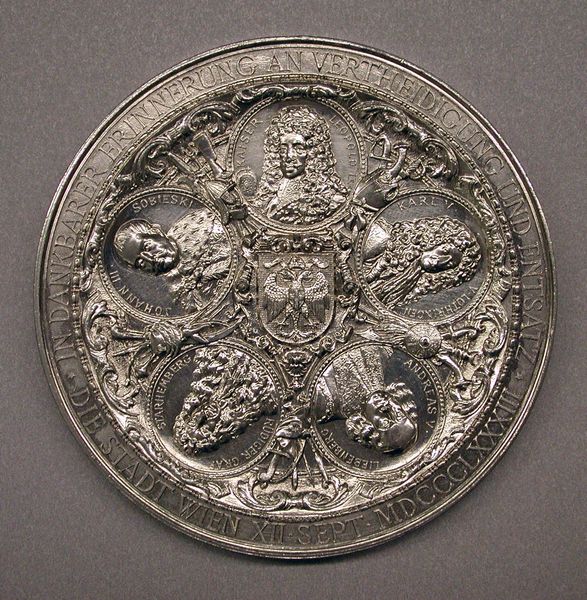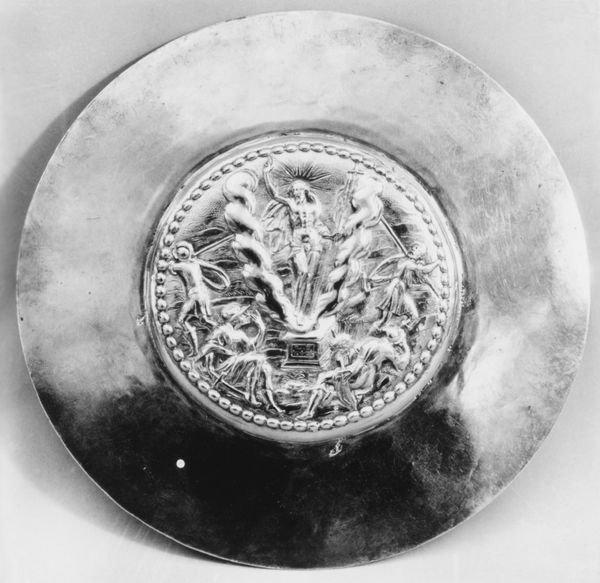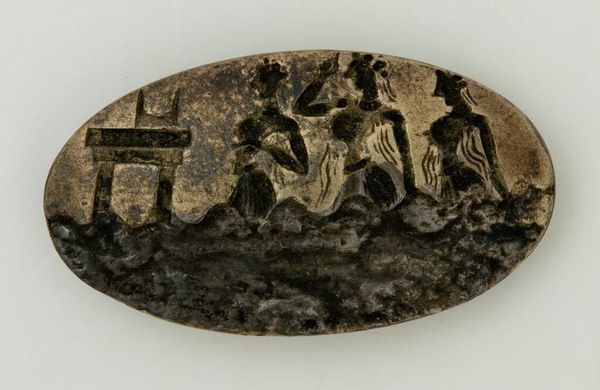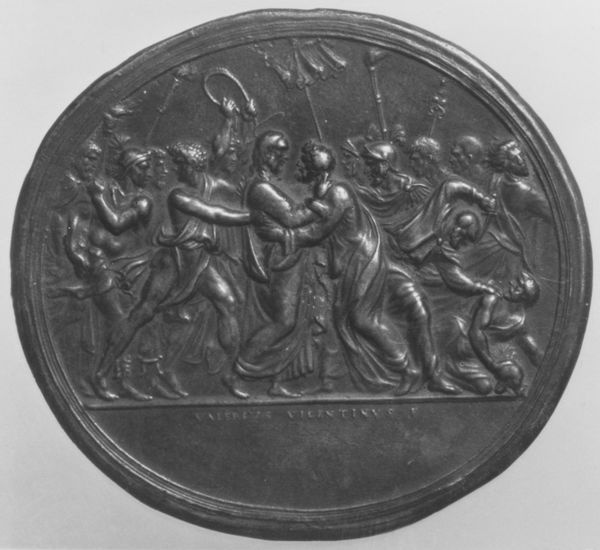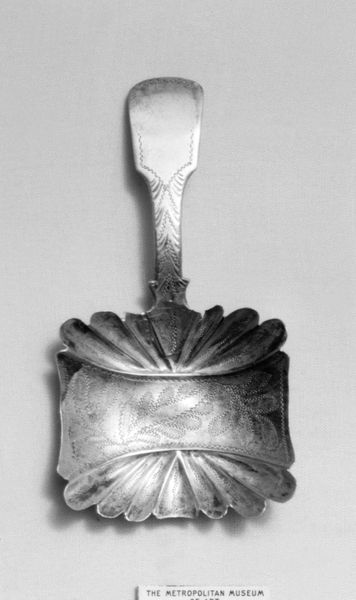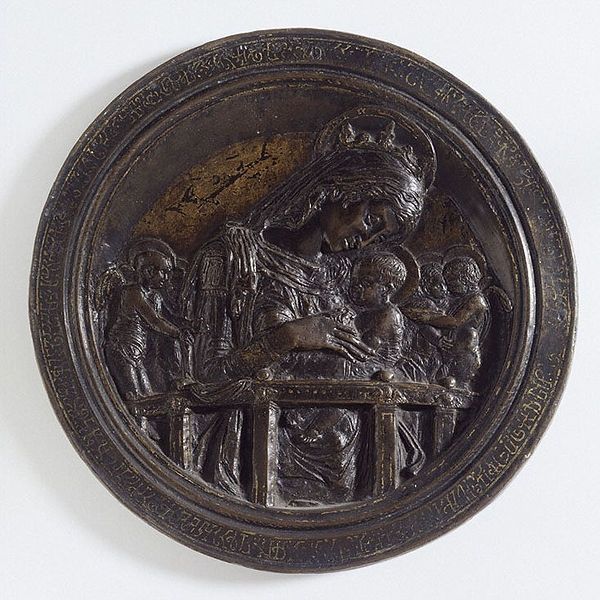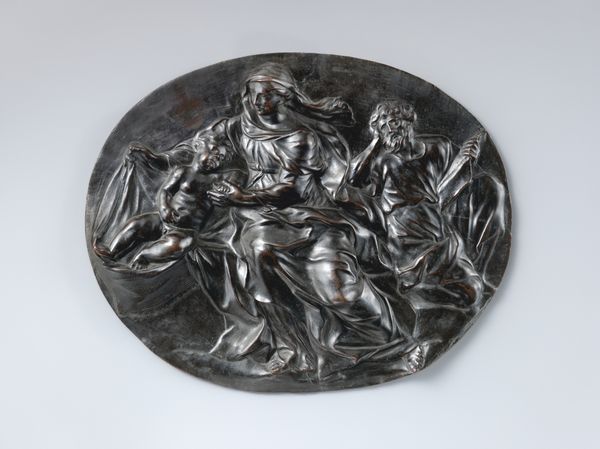
Virgin and Child with Young Saint John the Baptist 16th century
0:00
0:00
carving, silver, sculpture
#
carving
#
silver
#
sculpture
#
figuration
#
sculpture
#
history-painting
#
decorative-art
#
italian-renaissance
Dimensions: Diameter: 3 in. (7.6 cm)
Copyright: Public Domain
Curator: Oh, what a delicate scene rendered in silver! I'm immediately drawn to the tender way Mary cradles both infants, and the laurel wreath gives an ornamental halo. Editor: This piece, residing here at the Metropolitan Museum of Art, is entitled *Virgin and Child with Young Saint John the Baptist*. Attributed to Francisco Beccerril, it dates from the 16th century and gives a material expression to deep religious sentiments. The Italian Renaissance influence is unmistakable. Curator: Yes, absolutely. The iconic Virgin and Child are joined by young John, visually intertwining the narratives of the New Testament—pointing to salvation but equally highlighting sacrifice and even martyrdom, for John. Look at the textures, the play of light and shadow across the figures… Editor: The politics embedded within the patronage of such an item intrigues me. It's not merely decorative. This was probably commissioned for private devotion by a member of the upper classes, solidifying their spiritual authority through a very material object. The artistry becomes another way of expressing the power of its commissioner, an overt display of wealth meeting religious authority in a potent cultural symbol. Curator: Precisely, it speaks volumes about status. Though beyond this socio-historical context, don’t you feel that there's something eternally compelling in these figures, a timeless humanism? Note the figures are rendered not as deities but as relatable figures conveying very earthly concerns, anxieties, joys of motherly and childish bonding… it gives visual form to universal sentiments about the preciousness of childhood and the desire for salvation, very clearly rendered through these figures’ intimate and evocative postures. Editor: While I acknowledge its artistry, I always return to the ways in which powerful institutions like the Church leverage art for its persuasive and sometimes propagandistic value. Who exactly *gets* to interpret the significance, for instance? Is it now, as it was then, controlled by established socio-political structures? Curator: Those are critical questions, but perhaps works such as this open the possibility for individual meaning-making, outside the dogma. Looking closer, it presents this human narrative outside the conventional and more dogmatic narratives. In art, and its symbols, are potential interpretations which escape their age… Editor: A sentiment with which, my friend, a historian like me might find difficulty disagreeing. It leaves much to consider!
Comments
No comments
Be the first to comment and join the conversation on the ultimate creative platform.
